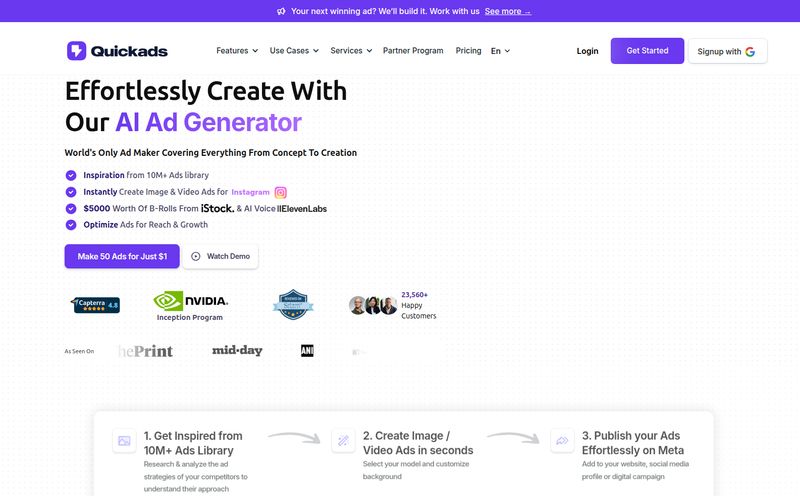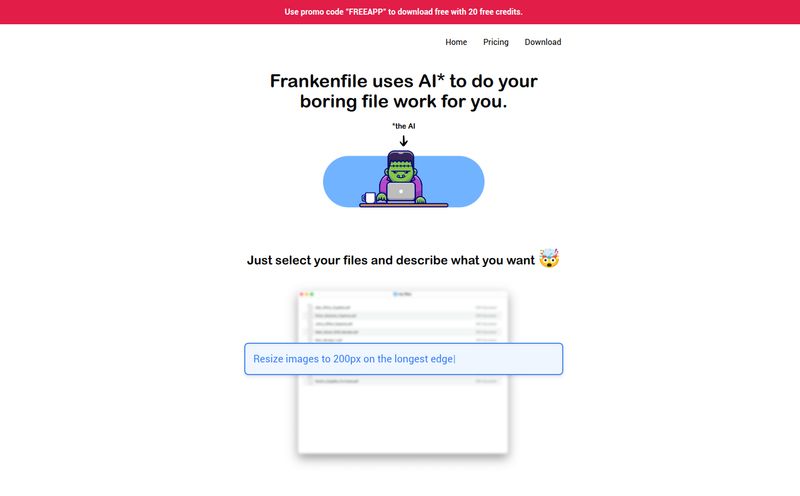Alright, let’s have a little chat. You and me. As a content creator, you know the dance. The constant, dizzying dance with the YouTube algorithm. You spend days, maybe weeks, pouring your heart and soul into a video. You edit, you color grade, you mix the audio until it's perfect. And then you hold your breath as you upload, praying you didn’t accidentally say a naughty word that sends your video straight to the dreaded demonetization dungeon. We've all been there.
Manually bleeping out profanity is one of the most tedious parts of the job. It’s a chore. You’re zipping through your timeline, trying to catch every slip of the tongue, inserting that classic, jarring BEEP. It messes with the flow, it takes forever, and honestly, it’s 2024, shouldn't a robot be doing this for us by now?
So, you can imagine my excitement when I stumbled across a tool called Bleep Censor AI. The name alone was music to my ears. An AI that automatically censors profanity? Sign me up. This could be it. The holy grail for creators who are, let's say, a bit... colorful with their language. I eagerly typed the URL into my browser, ready to see the future. And I was greeted with this:
Error 1016: Origin DNS error.
Well, that's a bit of an anticlimax, isn't it? The digital equivalent of knocking on a door and having the whole house disappear. But the idea was too good to let go. So, I did some digging. What was this ghost of a tool, and was it as good as it sounded?
What Exactly Was Bleep Censor AI Supposed to Be?
From what I could piece together, Bleep Censor AI was designed to be beautifully simple. It wasn't some bloated software suite with a million buttons you'd never press. The concept was straightforward: you upload your finished video, and their AI gets to work. It would peel the audio track away from the video, listen through the whole thing like a diligent, unpaid intern, and automatically identify any and all profanity. Then, it would mute just those words, slap the newly cleaned audio back onto your video, and hand you back a file that's ready for any audience. All without you having to lift a finger.
Think about the time savings. No more scrubbing through hours of footage. No more awkward manual cuts. Just a clean, advertiser-friendly video ready to go. The dream, right?

Visit Bleep Censor AI
The YouTube Demonetization Minefield
If you're not a creator, this might all seem a bit dramatic. "Just don't swear!" I hear you cry. Oh, if only it were that simple. YouTube's advertiser-friendly content guidelines are a notoriously shifing goalpost. What was fine yesterday might earn you that horrible little yellow dollar sign today. Sometimes, even words that sound like swear words can trigger the system.
This has a real impact on our bottom line. For many of us, this isn't just a hobby; it’s our livelihood. A demonetized video means hours of work with zero return. It's why we're so obsessed with finding ways to stay on the right side of the algorithm. A reliable profanity censor isn't just a convenience; it's a business tool. It's insurance against the whims of an automated system that doesn’t always get the context.
The Promised Land of Features
The core appeal of Bleep Censor AI wasn't just the bleeping, but the how. It was all about the AI.
Automatic Detection and Censoring
This is the main event. The promise was that the AI was smart enough to catch curse words in context, saving you the manual labor. Instead of a simple keyword filter that might bleep out the word "scrapbook," the AI was meant to understand conversational speech. A huge step up from older, dumber methods.
Effortless Audio Management
The fact that it handled the audio extraction and re-merging is a bigger deal than it sounds. Anyone who's wrestled with audio syncing knows that it can be a nightmare. A single frame out of place and the whole video feels cheap and unprofessional. Automating this process removes a massive technical hurdle for a lot of creators.
But Let's Be Real: The Potential Downsides
Now, I'm an optimist, but I'm also a realist who's been in this game for a while. No tool is perfect, especially one relying on AI. There were some obvious red flags to consider.
First, accuracy. Can an AI really understand sarcasm, or regional slang, or a word that's profane in one context but fine in another? I can see it now: a video about the Scunthorpe problem getting bleeped into oblivion. The potential for false positives (bleeping innocent words) or, even worse, false negatives (missing an obvious F-bomb) is real. Handing over complete editorial control to an algorithm is a big leap of faith.
Second, the reliance on a single tool. If your entire content strategy for monetization hinges on this one service, what happens when it goes down? Well... I guess we're finding that out in real-time. It underscores the need to have backup plans and not put all your eggs in one digital basket.
So... What Happened to BleepCensor.com?
This brings us back to the mystery. That "Error 1016" is a specific clue. It's a Cloudflare error, and according to their own documentation, it means Cloudflare (the service that helps websites run fast and securely) can't find the website's actual server. The address is in the phone book, but the house has vanished.
What does this mean? It could be anything.
- A Temporary Glitch: Maybe their server is just down for maintenance. (Though it's been a while...).
- Out of Business: This happens all the time with startups. They have a great idea, burn through their funding, and quietly shut down.
- A Pivot or Acquisition: Perhaps the team was bought by a larger company, and the tech is being integrated into something else, like a video editor.
Whatever the reason, the digital storefront is closed for now. It's a shame. I was genuinely excited to try it out and see if it lived up to the hype.
Frequently Asked Questions About AI Profanity Censors
What was Bleep Censor AI?
Bleep Censor AI was a proposed online tool that used artificial intelligence to automatically detect and mute profanity in videos, aiming to help content creators make their work more advertiser-friendly.
How was it supposed to work?
Users would upload a video file. The service's AI would then analyze the audio track, identify any curse words, mute them, and then merge the edited, "clean" audio back with the original video for the user to download.
Why is profanity such a big deal for YouTubers?
YouTube has strict advertiser-friendly guidelines. Videos containing profanity, especially early in the video, are often flagged for limited or no ads, a process known as demonetization. This directly impacts a creator's ability to earn revenue from their content.
Is Bleep Censor AI still available?
As of this writing, no. The website bleepcensor.com is showing a DNS error, which means it is currently offline and inaccessible. It's unknown if or when it will return.
What does a Cloudflare Error 1016 mean?
In simple terms, it means the domain name is active, but it's not pointing to a functioning web server. The connection between the website's address and the website's files has been broken.
Are there alternatives to a tool like this?
Yes, but most are manual. The most common alternative is to manually edit and bleep videos using software like Adobe Premiere Pro, DaVinci Resolve, or Final Cut Pro. Some services like Descript offer AI-powered transcription and filler word removal, which is a step in a similar direction, but a dedicated, automatic profanity censor is still a niche market.
A Great Idea, Lost in the DNS
In the end, Bleep Censor AI feels like a glimpse of a future that hasn't quite arrived yet. The idea is brilliant. It solves a real, frustrating, and expensive problem for thousands of creators around the world. It’s exactly the kind of smart, targeted tool that the creator economy needs.
Whether this particular tool ever comes back online or not, it's shown that there's a hunger for this kind of solution. The first company to truly crack the code on an accurate, reliable, and affordable AI profanity censor will have a massive hit on their hands. Until then, I guess I'll be warming up my bleep button. I'll be keeping an eye on that domain, just in case a phoenix rises from those DNS ashes. You never know.
Reference and Sources
- Cloudflare Support: Troubleshooting Cloudflare 1XXX errors



